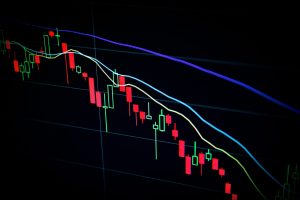Automated buying and selling of ad inventory has gained momentum.
Programmatic has a strong foothold in the German market, accounting for 65% of the total spend here, which equates to around 2.5billion Euros… It’s big business!
Nano already have a strong foothold with clients and agencies from a managed IO standpoint, but over the past year we have had more and more queries from clients interested in taking the activity they currently run directly with us, programmatic.
Of course much of this has been driven by the now delayed Google Chrome update which has had advertisers and publishers looking for new routes to deliver effective campaigns without their beloved cookies. Running programmatically to frequency cap across all activity is quickly to become a thing of the past, opening up the market to new technologies in, and out, of the programmatic sphere. The vast majority of queries we have had over the past few months, in particular, have related directly to the changes facing the industry due to Google Chrome updates.
So whilst this has been a difficult time for much of the industry, for us at Nano this has provided us with the opportunity to help clients navigate these changes using our identity free and cookie free product.
In the first few months of our programmatic launch in the German market, we saw a lot of interest, though most clients were a little hesitant to move all spend away from managed IO when they can see this is working well. In the initial months though almost 90% of clients were utilising programmatic to some degree, this only accounted for around 10% of client spend.
As we move into to the second quarter of our programmatic offering, we have seen the positive impact of well delivered campaigns, and we are now seeing programmatic accounting for closer to 30% of overall spend.
It’s true that Germany is famous for their car engineering, and true to form, the automotive industry has been first to pick up on the new opportunities which programmatic buying brings. The largest uptake for our new programmatic product has of course been automotive namely Audi, Mercedes, Renault, Skoda, and Volkswagen.
With programmatic buying quickly forming a greater part of our client briefs, we expect to see the percentage of programmatic buying continue to increase over the coming months. New availability of deterministic cookieless brand studies, alongside our probabilistic methodology of cookieless frequency capping, ensures we have the tools to deliver and measure activity in a cookieless world. This will only bring further success and exploration in to this new world of Nano’s programmatic delivery.







